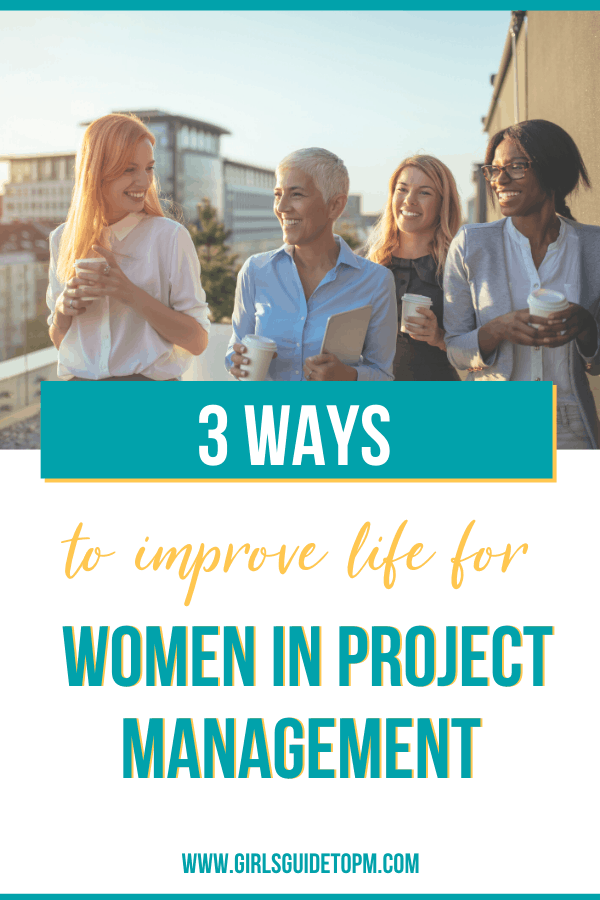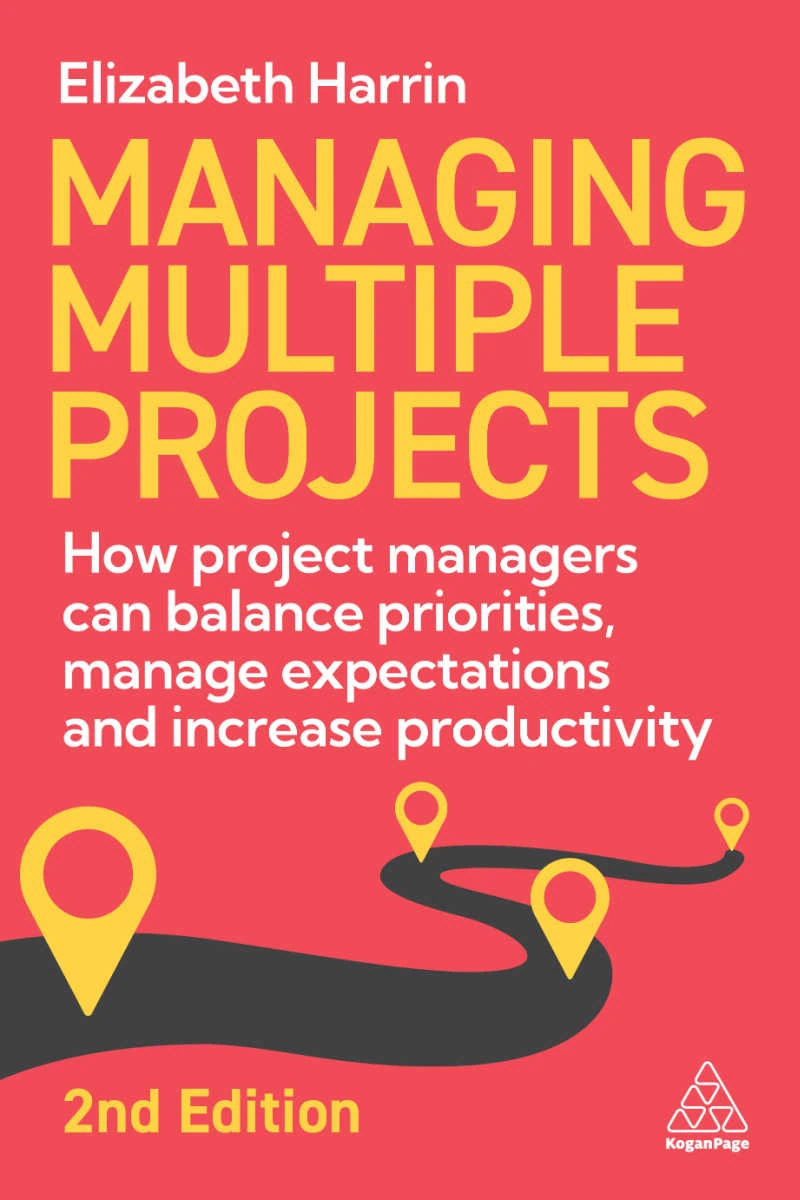3 Ways to Improve Life for Women in Project Management
This blog is reader-supported. When you purchase something through an affiliate link on this site, I may earn some coffee money. Thanks! Learn more.
I wrote this article for IWD 2020 but it still feels relevant to me today. Given all the challenges we’ve faced over the last year, and the impact of the pandemic on women in particular, I hope you’ll forgive me for refreshing something I already have on this, the day my children go back to school — hopefully this time for good.
This year’s International Women’s Day theme is ChooseToChallenge. I choose.
—–
So many column inches, blog posts and books have been written about why there’s a gender pay gap.
This book is my favourite, but frankly I’m bored of the ‘why’ already. I only have to look round my office (this year, on Zoom) to see the reasons why. What I’m interested in is how to eradicate it.
And in our world of project delivery that starts with looking at what it means to take a senior project leadership job.
Having been in senior project leadership roles, the expectations are:
- Long hours
- Being on call for your project sponsor, even on evenings and weekends
- Having someone else’s crisis or lack of preparation be your problem, regularly
- A workload that’s too large for a single person – although the management team appreciate your many project priorities, you still don’t get the help you need.
If I put that in a job description, would you apply?
Didn’t think so.
And yet we still wonder why the pool of candidates for senior project management jobs is so small.
If you are in a position of power – of any kind, at any level – at work, here are 3 things you can do to create an environment where closing the gender pay gap for women in project management will seem possible.
1. Make women feel safe at work
I remember the staff party where a colleague joked he had spiked my drink. I lost respect for him. I also lost my drink, as I didn’t want it after that, and I had to get another colleague to walk me to the station after the party.
Seriously, guys. How hard is it to think before you say something?
Homicide is the second largest cause of workplace death for women, after road accidents. Over a fifth of women who die at work are murdered. (It’s only 8% for men.)
What can you do to create emotional and physical safety for women in your workplace?
2. Make being a woman normal
When we got a feminine hygiene bin in the “unisex” toilet at work, I wrote to the 13k project managers who receive my newsletter and celebrated this small win (you can read that email here).
Inclusive design at work matters – as it does with project requirements and solution design overall.
One of the best conferences I went do was the Bureau of Digital’s PM Summit, where the morning housekeeping messages included a reference to where the facilities were for breastfeeding mothers. Have a room for pumping.
Like an actual room, not a toilet.
Make sure health and wellbeing policies include menopause. Give staff guidance on how to have conversations about menopause (as recommended by The British Menopause Society in their advice to clinicians) because as a male manager – especially a younger male manager – it’s probably not going to be something they’ve spent much time thinking about.
As an aside: I found talking about “womanly” symptoms easier in a second language than my first. Having to explain my medical appointments to a male manager in France was relatively simple because I only had clinical French vocabulary to go on. My grammar was basic. I didn’t have the colloquialisms that let you dance around a subject and be coy. So I said what I needed to say in basic, plain, clear French.
My manager didn’t show any signs of embarrassment. He told me had two daughters and understood. Job done.
Some of the biology of being a woman sucks, but we live with it. The workplace shouldn’t make it harder. We’re humans, not robots.
3. Make managing your life stuff normal
Flexible working, being able to ask for part-time hours, being able to work from home and smart collaboration tools that keep you connected even when you don’t want to be – they’ve all changed the way work/life integration, which in the past I’ve called work/life balance but that doesn’t really represent how we blend our work and personal lives any longer, happens for women in project management.
It’s kind of good.
But not that good.
The ‘always on’ culture means it’s hard to carve out time for actually having a life.
Everyone has life admin to do
There’s an expectation at work that you are there, and therefore being paid to do the work. I get that, I really do. As a line manager, I don’t want my employees surfing Amazon all day looking at stuff they can buy (like this).
As a colleague, I am frustrated when I see people at the desk next to me spending longer than I judge as appropriate checking the sports fixture results — although these days with everyone working from home it’s impossible to tell, and that’s taken some of the stress away.
But let’s get real about this: while we are at work, everyone else is too. The dentist. The optician. The teachers.
I have to book a slot to speak to my children’s teachers, and the booking opens at 9am. I can’t wait until the evening because the few slots I will be able to do, around my existing work commitments, will already be gone. So do I take time “off” work at 9am to quickly book the teacher consultations or do I wait until I’m not at work, and then have to reorganise work around those consultations? Either option is bad for my employer. I think doing the booking at 9am is less disruptive, even though it happens in work time.
There has to be an acceptance at work that family comes first – for those people at work with a family, obviously this isn’t going to apply to everyone. But it’s not just about kids. It’s eldercare, or dropping in groceries to a neighbour with a newborn, or taking your aunt to visit her friend in hospital.
It’s about balancing work with what it means to have a fulfilling life, not simply one where you only have time to treat family and community interactions as a To Do list item to be ticked off.

Resource your teams appropriately
Some of creating a work/life balance is about culture change. But I’d say a good 80% of it is about having enough staff and the tools to work efficiently.
I have lost count of the number of projects I have been involved with or led where we haven’t had the resources required to deliver the project appropriately. What happens? People end up working overtime to fill the gaps.
That is the fastest way to lose your best people. They are prepared to step up once or twice in a genuine emergency, but when superhero skills are required to bring in a project on time, then you’ve lost the battle.
Those highly efficient, talented, knowledgeable resources are just one bad project away from walking out the door.
The good news
The good news is that I believe shifts in workplace culture that make things better for women also make things better for people. All people.
So, as a project leader, what are you going to do to make things better for women in project management, and your wider project delivery community at work?
Pin for later reading:


